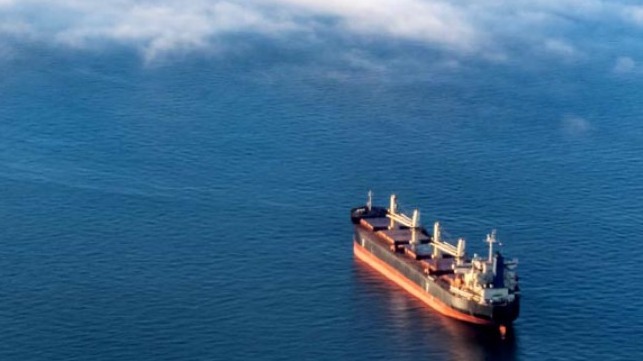Danish Shipping Industry Releases Plan for Climate and Decarbonization

The Climate Partnership for a Blue Denmark, representing Denmark’s shipping industry, has developed its plan as part of the nation’s overall effort to address climate change and achieve carbon neutrality. For its part, the shipping industry is targeting carbon neutrality by 2050, without the use of climate compensation. To achieve that goal, it also targeting beginning commercial operation for its first ocean-going zero-emission vessel by 2030.
As a nation, Denmark has set ambitious goals to undertake a green transition as it works to fight climate. The government is calling for a 70 percent reduction in CO2 emission by 2030 as it works to become a leader in finding ways towards a carbon-neutral future.
To achieve these ambitions, the Danish Prime Minister called on the business community to join in collaboration to address climate issues. Thirteen partnerships, including one for the shipping industry, were announced in 2019, each focused on different sectors of Danish industry to develop plans to address climate issues.
“The Danish government has given Blue Denmark a clear task: Bring ideas and proposals to the table in order for the government and the industry to work together,” said Anne H. Steffensen, Director General, Danish Shipping. “We see this as an opportunity to propose initiatives in the short run, in the longer run, and finally to strengthen the voice of Denmark at the international level.”
Blue Denmark calls the transition to a more sustainable shipping industry a massive challenge but recognizes the importance of becoming carbon neutral. In its new report, Blue Denmark identified five barriers that must be overcome to fulfill the vision and reach the targets. They highlighted that shipping is a global industry with more than 95 percent of Danish shipping activities taking place outside Danish waters. As such, all of the initiatives have to be regulated within the larger framework of the International Maritime Organization.
To achieve the carbon reduction goals, Blue Denmark believes that technology will need to take a quantum leap by replacing traditional fuels with new climate-neutral fuels. It says that the current energy-savings technologies will not be enough to achieve the goals to reduce greenhouse gas emissions.
Another barrier that they identified is that the future energy system is not yet in place to provide a steady supply of green fuels that shipping companies, ship owners, and the fishing industry will require. They are calling on the partnerships to upgrade the current energy system on a national and global scale while the land-based energy infrastructure in Danish ports will also need to be upgraded to handle new green fuels or batteries.
Finally, Blue Denmark says that the business case for climate-friendly shipping must be strengthened. They believe that climate considerations should be incorporated into commercial activities to incentivize the use of climate-friendly technologies.
Identifying the areas that the government and the shipping industry should collaborate on to achieve the climate goals, Blue Denmark developed six initiatives that it says the shipping industry is ready to invest in currently. It also identified 15 additional recommendations for government action. These initiatives and recommendations fall into four broad categories, energy efficiency, ports and shortsea shipping, green fuels, and climate diplomacy.
Blue Denmark is prepared to invest in efforts to creating sharing of shipping data, removing waiting times in ports, developing a partnership for test ships, establishing a maritime center of excellence, and creating a global innovation fund. It will also work to coordinate efforts to attract research funds from the EU.
Its recommendations for government range from developing programs for maritime climate solutions to export financing and supporting the development of green ferries and green highways at sea. They are also calling for climate-differentiated tolls at ports, new energy infrastructure at the ports, a national strategy to develop new green fuel power, and diplomacy with the IMO.
“The transition shipping is facing in order to become climate neutral by 2050 will entail collaboration and new pathways both in terms of fuel, technology, energy infrastructure as well as a regulatory framework,” concluded Steffensen. “The partnership between Blue Denmark and the Danish government can give Denmark a leading position in this vital transition for shipping”
Development of the report involved several different organizations, including Danish Ports, Danish Maritime, and the two fisheries associations, as well as members of the shipping community. The committee developing the report was chaired by Søren Skou, CEO of A.P. Moller-Maersk, with Bjarne Foldager CEO of Man Energy Solutions, and Carsten Jensen, CEO of the Danish ferry company Molslinien as co-chairs.
The report was finalized in March 2020 and is now being released for public discussion.
